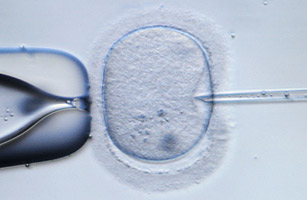
For couples choosing to start a family with in vitro fertilization (IVF), the odds are not always in their favor. The procedure, even under the best circumstances, has a 30% chance of resulting in a live birth on average. So it was welcome news indeed when Stanford University researchers reported on a new method for selecting the strongest embryos, which would most likely result in a pregnancy and live birth.
By filming the first few hours of an embryo's activity after fertilization, the scientists were able to come up with a profile of characteristics of embryos that were most likely to continue developing and survive for several days, instead of dying off. Among other things, the criteria included the time that the embryos took to make their first division from one cell into two, as well as the time that this division itself took to unfold. The next step will be to put this video-based assessment to the test in an IVF clinic, and determine whether the analysis can actually improve pregnancy and live birth rates.